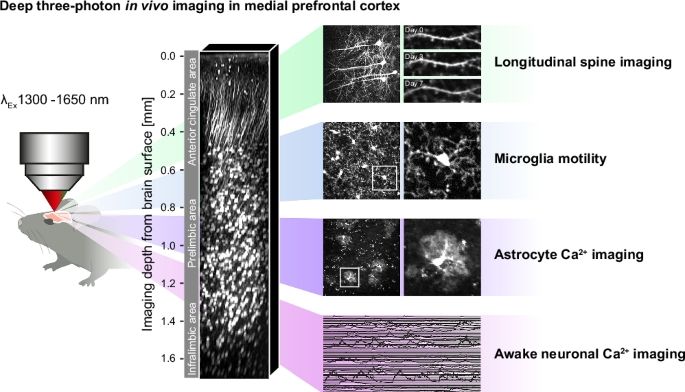It's a great paper - congrats!
03.10.2025 20:25 — 👍 0 🔁 0 💬 0 📌 0
This objective was designed for 2P imaging. For 1P imaging, I believe that there are still some technical problems to be solved. Perhaps @voigtvision.bsky.social or @nvladimus.bsky.social can tell you more!
29.09.2025 09:15 — 👍 2 🔁 0 💬 0 📌 0
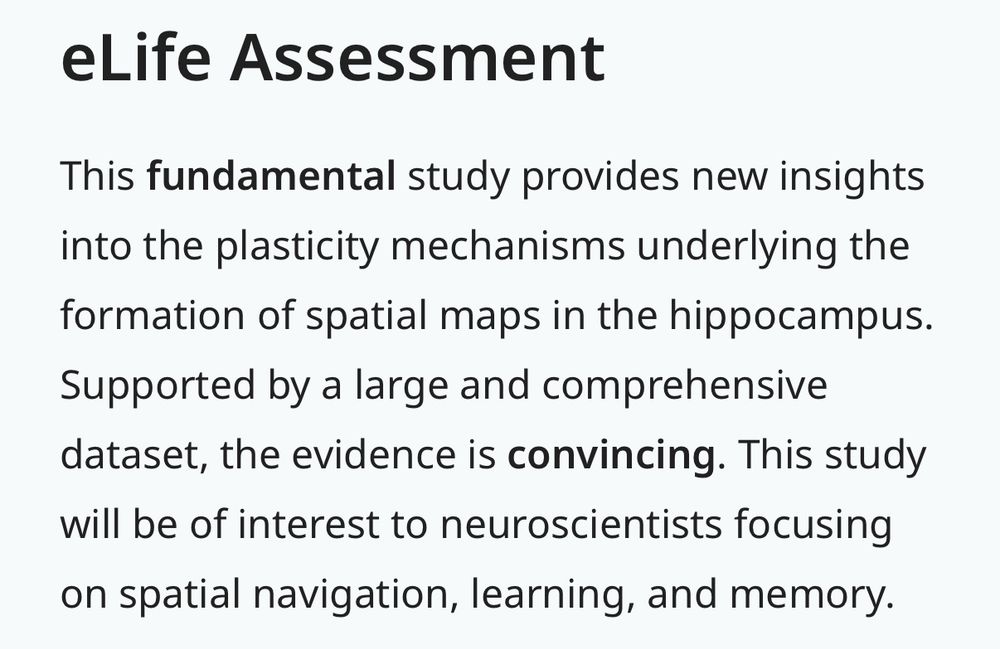
« Diverse calcium dynamics underlie place field formation in hippocampal CA1 pyramidal cells. »
A fundamental study now published @elife.bsky.social
elifesciences.org/reviewed-pre...
17.09.2025 12:05 — 👍 35 🔁 12 💬 1 📌 1
I also wonder whether you have observed any signs of cytotoxicity or fluorophore aggregates?
31.07.2025 20:06 — 👍 0 🔁 0 💬 1 📌 0
This OCaMP sensor looks quite promising! Looking forward to trying it out!
31.07.2025 20:01 — 👍 1 🔁 0 💬 1 📌 0
Thanks, it looks very interesting!
The first comment of reviewer #1 is also "interesting", asking for the "connectome" of VIP neurons for the revised manuscript ;-)
03.07.2025 19:17 — 👍 1 🔁 0 💬 1 📌 0
New blog post with a review of interesting papers on VIP interneurons in cortex and hippocampus: gcamp6f.com/2025/06/23/i...
Covering work from @koenvervaeke.bsky.social's lab with @mateneubrandt.bsky.social, Yoav Adam's lab and Bernardo Rudy's lab.
23.06.2025 13:04 — 👍 14 🔁 4 💬 1 📌 0
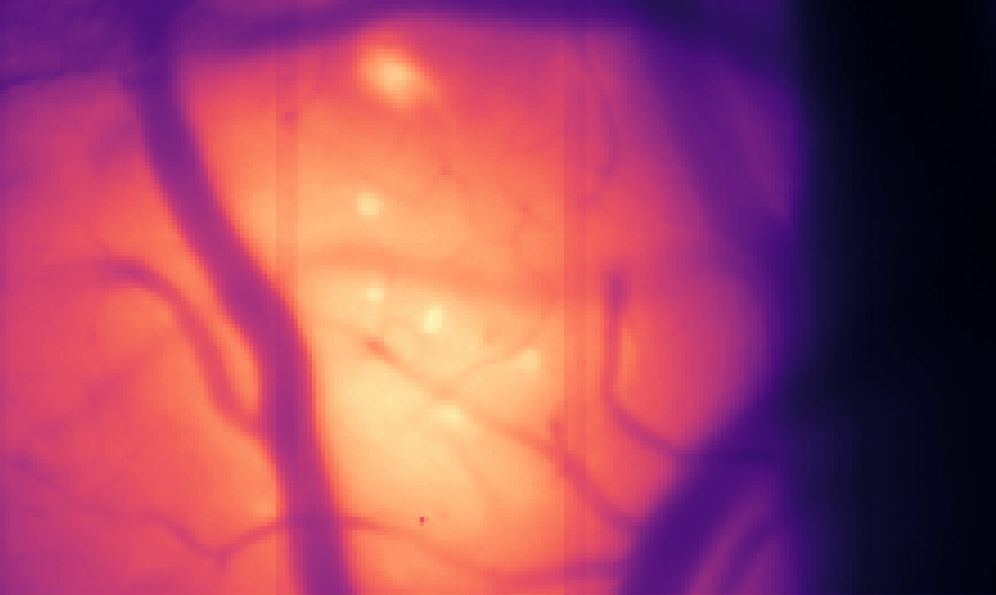
Brightly labelled pyramidal cells in the mouse retrosplenial cortex. Blood vessels are visible of various thicknesses in darker colours.
#neuroskyence folks: as my postdoc grant is running out soon, I am looking for new opportunities in systems neuroscience!
Keywords: patch clamp ephys, opto, mouse behavior, (in vivo) voltage imaging. Would love to return to the Basal Ganglia.
Sharing appreciated, and happy #FluorescenceFriday !
13.06.2025 13:33 — 👍 74 🔁 54 💬 6 📌 1
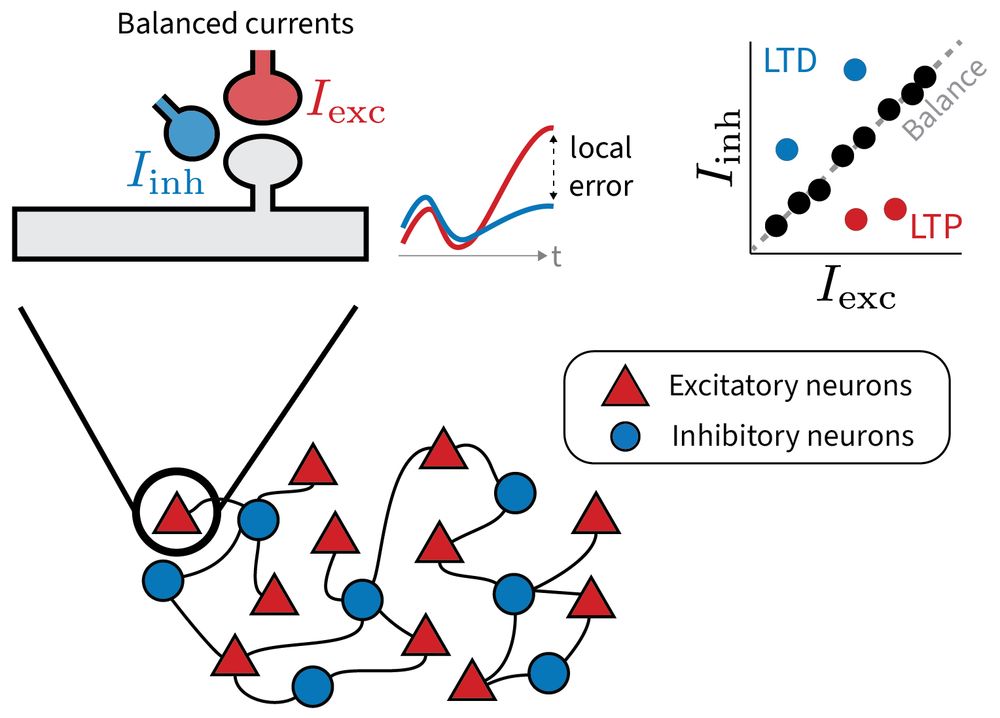
1/6 Why does the brain maintain such precise excitatory-inhibitory balance?
Our new preprint explores a provocative idea: Small, targeted deviations from this balance may serve a purpose: to encode local error signals for learning.
www.biorxiv.org/content/10.1...
led by @jrbch.bsky.social
27.05.2025 07:49 — 👍 174 🔁 56 💬 4 📌 3
Yes, this is great work! An important aspect is that it clearing of *archival* FFPE tissues over 10 years old. This method suddenly makes such biomedical archives much more valuable.
27.05.2025 11:23 — 👍 3 🔁 0 💬 0 📌 0
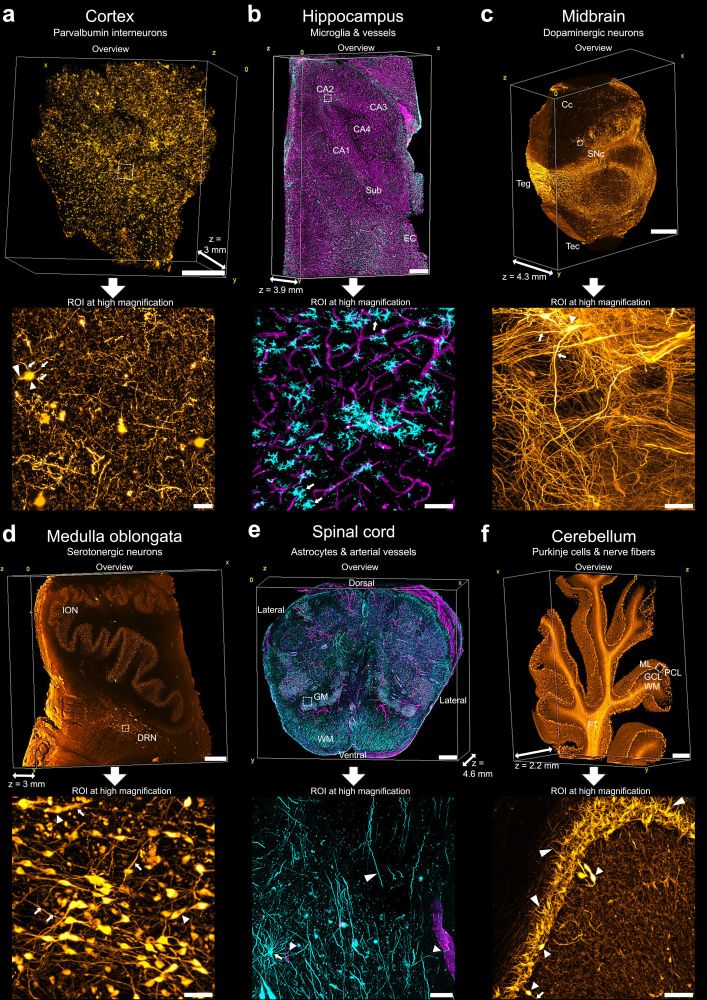
The culmination of years of hard work by Anna Maria Reuss & Co: aDISCO - a protocol for clearing & antibody-staining human formalin-fixed paraffin-embedded (FFPE) tissue! With lots of @mesospim.bsky.social #lightsheet #Microscopy @ptrrupprecht.bsky.social & many more!
www.biorxiv.org/content/10.1...
27.05.2025 07:30 — 👍 48 🔁 13 💬 2 📌 0
Could it also be feedback inhibition?
21.05.2025 15:46 — 👍 1 🔁 0 💬 1 📌 0
Introducing warpfield, an open source Python library for GPU-accelerated non-rigid 3D registration. Warps and aligns gigavoxel volumes within seconds (not hours). For 3D microscopy, region-to-region and cell-to-cell matching.
A collaboration with @mh123.bsky.social 🚀
github.com/danionella/w...
12.05.2025 05:25 — 👍 195 🔁 54 💬 7 📌 3
Thanks! I knew this one and was curious about hippocampus-specific astrocytes. But I'll check the paper again!
06.05.2025 07:26 — 👍 3 🔁 0 💬 0 📌 0
(at least it's not possible in the recordings that I'm aware of)
26.04.2025 17:40 — 👍 1 🔁 0 💬 0 📌 0
Yes, I believe it's hard. There are only some dozen people in who could do these in vivo whole-cell recordings. In addition, in vivo there are so many EPSPs that you cannot detect single ones. It is currently not possible to reliably detect individual EPSPs in in vivo recordings.
26.04.2025 17:40 — 👍 1 🔁 0 💬 1 📌 0
Whether these neuromodulatory effects on neurons affect EPSP amplitude, excitability or something else is difficult to know - it would require whole-cell recording in the living animal while controling the neuromodulators.
26.04.2025 16:26 — 👍 2 🔁 0 💬 2 📌 0
I would assume that blood flow is partially controlled by local spiking activity (as mentioned by Luke), and less so the other way around (blood flow causing additional spikes). However, neuromodulation (NA or ACH, which also control vasoconstriction) act as a gain modulator for neuronal spiking.
26.04.2025 16:24 — 👍 2 🔁 0 💬 1 📌 0
I believe it is still an open question how or whether neuromodulatory effects are specific, thereby potentially resulting in vessel dilation in a specific part of cortex but not in another.
26.04.2025 16:14 — 👍 0 🔁 0 💬 0 📌 0
To provide (or replenish) energy, blood vessel dilation seems the most obvious candidate. Vessel dilation is controlled by neuromodulators like NA or ACh directly, or indirectly by the endfeet of astrocytes (which respond to NA or ACh), e.g. www.biorxiv.org/content/10.1...
26.04.2025 16:11 — 👍 1 🔁 0 💬 2 📌 0
And another question: Do you have advice on how to identify astrocytes from this stack? So, if I just scroll through the raw data, would I be able to identify them based on the coarse somatic region?
25.04.2025 08:47 — 👍 0 🔁 0 💬 1 📌 0
PGY 4 Neurology, interested in #consciousness #coma and #AI in #Neurocriticalcare
Neuroscience | Drosophila | Electrophysiology | in vivo imaging | adaptive decision-making | sensory processing | neuronal circuits | riding waves
Neuroscientist at the Sainsbury Wellcome Centre (UCL, London) in the labs of Tom Mrsic-Flogel and Tim Behrens
Enteric Nervous System and Gut Physiology 🔬
Neuroscience & functional ultrasound imaging. Vision and brain states. Professor at University Medical Center Göttingen. https://brainwidenetworks.uni-goettingen.de/ Co-Spokesperson, EKFZ Center for Optogenetic Therapies. https://ekfz.uni-goettingen.de/en/
Bringing deep neuroscience and epilepsy domain expertise to data science
Neuroscientist and cell biologist dedicated to unraveling how organelles adapt their structure and function to sustain neuronal signaling and metabolism. Postdoc in the JLS lab @ HHMI Janelia
Neuroscience PhD student in Michael Greenberg Lab @ HMS | Univ of Rochester URMC | Neuropeptide control of synaptic plasticity
PhD student in the Niemeyer Lab at Saarland University
🧠 medical neurosciences @Charité
interested in memory, sleep, neuron-glia interaction, health, and scicomm 🌈
Postdoc at Columbia University. Researching the neural mechanisms behind memory formation using electrophysiology.
(She/Her)
Project Assistant @ Neuronal Systems Lab, University of Hyderabad.
Exploring the neuroscience of behavior through honeybees 🐝
Electrophysiology, Tetrodes, Spike sorting, modelling etc..
Passionate about neural coding and information processing.
PhD student at Memory Consolidation Lab, UZH. Hippocampus, sharp-wave ripples, electrophysiology, and context novelty.
Prof. @ucsantabarbara.bsky.social - Runs a lab slslab.org - Works on computation, neuroscience, behavior, vision, optics, imaging, 2p / multiphoton, optical computing, machine learning / AI - Blogs at labrigger.com - Founded @pacificoptica.bsky.social
Postdoctoral researcher at the University of Montreal and Mila - Quebec AI Institute. Amateur writer.
Dr. @yiotapoirazi.bsky.social lab (https://dendrites.gr/) at @imbb-forth.bsky.social. We investigate the role of dendrites in learning and memory processes, using computational models, behavioral and imaging experiments.
Machine Learning tools for neuroscience @mackelab.bsky.social.
biomedical engineering PhD student at NYU. optical engineering/neuroscience. sstucker.com







